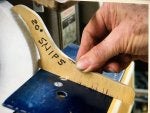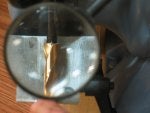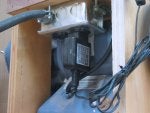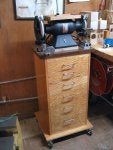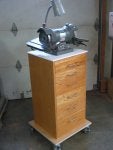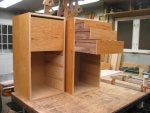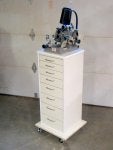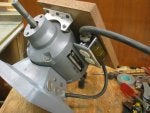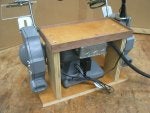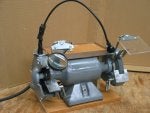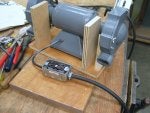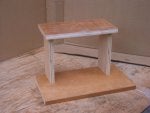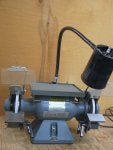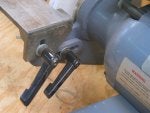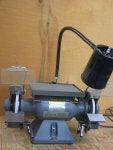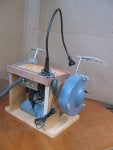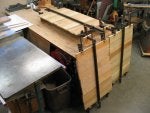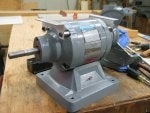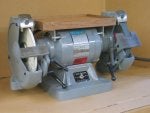It looks like your shop is coming along pretty good and you’ve got most of the things needed. That’s a great story about the nose cone materials used in the making of the barbeque grill.
I, too, have disrupted domestic tranquility with storage of a big lumber buy that was too good to pass up. Twice I had piles of lumber that stayed on our covered back porch until I had room to store things in my lumber storage areas. It took several years to accomplish this. The drawer cabinet base will be a good opportunity for you to use up some of that lumber that may not be of a quality level suitable for fine furniture. Drawer sides and backs are real lumber alligators. I’ll joint and glue up wide panels and then rip the drawer sides out of that. I’ll start with 4/4 lumber, face flatten, skip dress, and joint the edges. Once the drawer sides are roughly ripped out, back to the jointer for finish flattening and then to the planer for final dressing to 5/8” thickness. The relatively short lengths makes good use of wood that may be twisted or bowed too much for longer parts.
The grinder drawer stand is pretty heavy and won’t move against pressure put against the grinder when grinding. If it does, you’re putting way too much pressure against the wheel and will burn the steel. On many of my stands, the grinder is screwed to the top. There’s a ¾” space left between the top of the top drawer and the bottom of the top to allow clearance for the bolts. That can be seen on one of the photos shown above. You’re essentially building a casual lingerie type drawer cabinet. Its good practice. I’ll use an easier to make locking joint on the drawers rather than dovetails. The sides and back of my cabinets are made of ¾” plywood, either birch or oak veneer. Having a back of ¾” plywood is crucial to squareness and stability. The cabinet is set on a floor float that has casters placed wide enough so that when turned under the cabinet, there won’t be imbalance.
The tray tops on some of the grinders are attached directly to the grinder’s body with an angle piece and stand-off spacers. The original through bolt is discarded and usually replaced with 10-32 all thread long enough to hold things in place. This is possible with the larger grinders with four through bolts. The Baldor 612 only has two through bolts, so this isn’t possible and thus the two upright pieces of plywood behind the grinder. I’ll try to get some photos.
… lots of blather here and lots of thread drift but I’ve nothing more interesting to do this morning.


